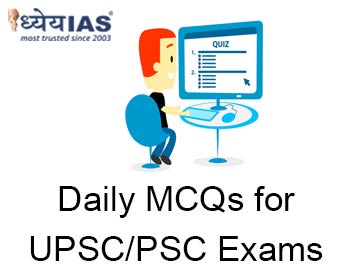Home > Daily-mcqs
Daily-mcqs 25 Sep 2025

Q1:
With reference to INS Androth, newly built for the Indian Navy, consider the following statements: Which of the statements given above is/are correct?
A: 1 and 2 only
B: 1,3 and 4 only
C: 1, 2 and 3 only
D: 1, 2, 3 and 4
Answer: C
Explanation:
Statement 1 is correct. INS Androth is part of the ASW‑SWC series (Anti‑Submarine Warfare Shallow Water Craft), sometimes referred to as the Arnala class.
Statement 2 is correct. It is being built by GRSE and features a high level of indigenous content (over 80 %).
Statement 3 is correct. The ship uses water‑jet propulsion driven by multiple (three) marine diesel engines.
Statement 4 is incorrect. It is named after the Androth Island in the Lakshadweep archipelago, not in the Andaman & Nicobar Islands.
Q2:
With reference to the “Direct Broadcast Network (DBNet)” in the context of global meteorological satellite data, consider the following statements:
A: 1 and 2 only
B: 1,3 and 4 only
C: 1, 2 and 3 only
D: 1, 2, 3 and 4
Answer: C
Explanation:
Q3:
With reference to the recently announced MoU between NCMRWF and NSIL for setting up DBNet stations under Mission Mausam, consider the following statements: Which of the statements given above are correct?
A: 1 and 2 only
B: 1 and 3 only
C: 2 and 3 only
D: 1, 2, and 3
Answer: C
Explanation:
Q4:
With reference to NewSpace India Limited (NSIL), consider the following statements: Which of the statements given above are correct?
A: 1 and 2 only
B: 1,3 and 4 only
C: 1, 2 and 3 only
D: 1, 2, 3 and 4
Answer: C
Explanation:
Q5:
Consider the following statements about the OECD’s interim outlook for India’s economy: Which of the above statements is/are correct?
A: 1 only
B: 1,2 and 4 only
C: 2 ,3 and 4 only
D: 1, 2, 3 and 4
Answer: B
Explanation: